Soccer and fashion: there is no other match as unpredictable as this one. At times a bad pass, at others a volley into the top corner. We have looked back at some of the highlights in the history of the European Championship and tried to find the right words.
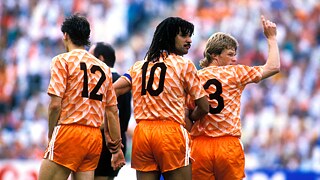
Among legends: Van Basten, Gullit, Koeman | © picture alliance / Laci Perenyi | Laci Perenyi
Sometimes the present (Berlin) is best explained by the past (Dutch players at the 1988 European Championship): Three friends in Berlin leaving the club on an ordinary Sunday afternoon informing their buddy that they intend to round off the event with a final keta line - tot ziens!

English fans in the Rheinenergiestadion at the 1988 European Championship match between England and the Netherlands | © picture alliance / SZ Photo | Horstmüller
To this day, the location and circumstances of this picture remain unclear: are these two gentlemen just British tourists on a resort vacation who, having barely arrived on the airfield of the Aeropuerto de Gran Canaria, are already getting into the right mood and eagerly waiting for the terminal bus? Or are these rather two disappointed fans of the Three Lions who witnessed England's 3:1 defeat against the Netherlands in the Müngersdorfer Stadium at the 1988 European Championship in Germany?
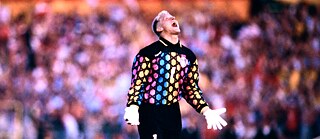
Danish goalkeeper Peter Schmeichel celebrates after winning the final against Germany at the 1992 European Football Championships | © picture alliance / Laci Perenyi | Laci Perenyi
The fashion of the 1990s was playful - that's for sure. Few people know, however, that at the time, the design of football shirts was inspired by board games. Here we see Danish goalkeeper Peter Schmeichel contorting himself for a sophisticated Twister position. Some, however, recognize it as a celebratory pose for the Danish national team's surprising victory at the 1992 European Championship.
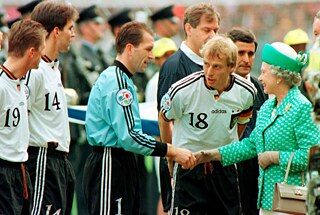
Queen Elizabeth II greets the players of the German national team before the 1996 European Championship final | © picture alliance / ASSOCIATED PRESS | MICHAEL PROBST
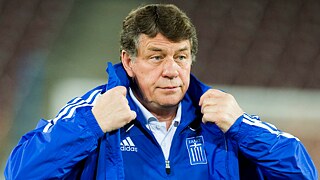
The former Greek national team coach “King” Otto Rehagel | © picture alliance / dpa | Brian Stewart
Royal blue shell suit: “King Otto” Rehhagel surprisingly won the EURO 2004 title for Greece. In return, the man who was rumored to have been born in a tracksuit was inducted into the sporting Olympics in Hellas as Rehakles I.
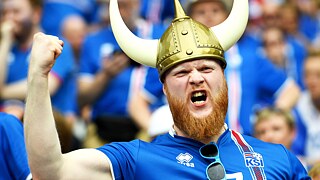
A fan of the Icelandic national team at the 2016 European Championships | © picture alliance / dpa | Georgi Licovski
Iceland has roughly the same population as Bielefeld, but far more interesting headgear than East Westphalia. Consequently, the island nation played successfully at the EURO 2016, while Arminia Bielefeld recently managed to avoid relegation to the Regionalliga by the skin of its teeth.
June 2024